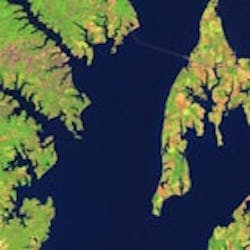Federal Agencies Release Draft Reports Required by Chesapeake Bay Executive Order
Federal agencies recently released seven draft reports required by President Obama’s executive order on the Chesapeake Bay, which contain a range of proposed strategies for accelerating cleanup of the nation’s largest estuary and its vast watershed.
The draft reports collectively call for increased accountability and performance from pollution control, habitat protection and land conservation programs at all levels of government, including an expanded use of regulatory authorities to address pollution control and additional voluntary and market-based solutions, particularly when it comes to habitat protection and land conservation programs. Federal agencies are also proposing new ways to harness the latest innovations in science and technology. The proposed actions are in response to overwhelming scientific evidence that the health of the Chesapeake Bay remains exceptionally poor, despite the concerted restoration efforts of the past 25 years.
“Communities in the Chesapeake Bay watershed expect and deserve rivers and streams that are healthy and thriving,” said U.S. Environmental Protection Agency Administrator Lisa P. Jackson, chairperson of the Federal Leadership Committee and the federal representative to the Chesapeake Executive Council. “We need bold new leadership, collective accountability by all contributors to the bay’s problems, and dramatic changes in policies using all the tools at hand if we are to fulfill President Obama’s goal for clean water throughout the region. These reports bring us a step closer to achieving the vision we all share for the future of the Chesapeake Bay.”
The draft reports are the first step in the creation of a new strategy for restoring and protecting the Chesapeake Bay and waterways in the region, as defined by the executive order. The reports include a variety of strategies and options for addressing issues such as water quality, public access, landscape conservation, climate change, scientific monitoring and the protection of living resources. The draft reports were also submitted to the Federal Leadership Committee that is coordinating work on the executive order.
During the next 60 days, the Federal Leadership Committee will evaluate the proposals in the draft reports and consult with bay jurisdictions to refine the recommendations for meeting key challenges to the Chesapeake Bay’s health. On Nov. 9, the Federal Leadership Committee will release a draft strategy that integrates the seven reports.
Source: EPA
